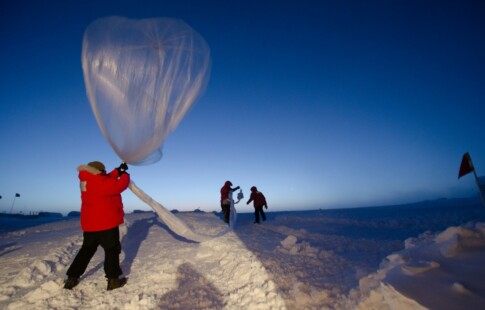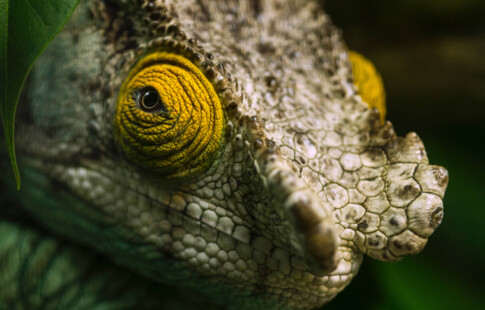
Evolution in Motion: The Ancestry of Modern Dogs
We are reader-supported. When you buy through links on our site, we may earn affiliate commission.
From Pomeranians to Saint Bernards, there’s an astonishing amount of variation among man’s best friends. How did we turn wolves into cuddly couch potatoes? Let’s take a closer look at the evolution of dogs, from their ancestry to the traits that distinguish them from wolves.
The Evolution of the First Dogs
Dogs (Canis lupus familiaris) and gray wolves (Canis lupus) share a common ancestor — a wolf species that went extinct sometime in the Late Pleistocene Epoch. Although no one is certain when dogs began to genetically diverge from gray wolves, researchers estimate it happened between 36,900 and 41,500 years ago.
That’s not quite the same thing as domestication. Divergence is simply a genetic change, while domestication involves humans teaming up with wolves and changing their behavior over time. Domestication probably happened between 20,000 to 40,000 years ago. During that time, dogs and wolves were likely still interbreeding, but our four-legged friends were well on their way to becoming the familiar faces we know and love. They were the first domesticated species.
The evolution of dogs may have started by accident. Wolves bold enough to enter human encampments — and not cause a scene by hurting anyone in the process — were probably treated to food scraps, which were left on the ground either by accident or by people who wanted to see what would happen. Some of them may have started raising puppies near human settlements.
People would have killed or chased away any aggressive wolves from their homes, leaving only the calmest, friendliest canines to survive and reproduce. Over time, people might have started to benefit from the wolves. The wolves could have served as watchdogs that chased other predators out of their territory. They ate the discarded food scraps that would otherwise rot or attract carnivores to the area.
Man’s Best Friend
Eventually, people began using domesticated dogs for everything from hunting to pulling sleds. The two species made a great team. Ancient hunting dogs used sight, smell and sound to track prey humans otherwise wouldn’t catch.
There’s evidence that many people treated dogs like members of the family, with dog burials spanning Asia, Africa, North America and Europe. People often buried them the same way they buried other humans. The oldest known dog burial was a puppy found in a 14,000-year-old grave, and it showed evidence of being treated for an illness, meaning people were taking care of it. Other dogs were mummified or buried next to people.
Changes Emerge
When the human diet began to change after the advent of agriculture, dogs evolved to have more copies of the AMY2B gene, which allows for starch digestion. This might be one of the biggest differences between wolves and dogs — to this day, wolves are carnivores and dogs are omnivores.
But there are other, more subtle behavioral changes the two subspecies no longer share. A dog puppy’s gaze will follow your finger when you point, while a wolf pup won’t do the same. Wolves don’t gravitate toward new people or experiences like dogs do. Dogs actually have a genetic change on chromosome six that predisposes them toward friendliness to people.
Even trained wolves that spend all day with humans are extremely shy, and they don’t make good guard dogs due to their fear of approaching strangers. They startle easily and often react aggressively out of fear. Wolves also roam constantly, while dogs are content to snooze in a sunny spot in the yard. It’s just one of the many reasons wolves make terrible pets. How did humans change their evolution so drastically?
Survival of the Cutest
Dmitry Belyayev’s fox project is one of the most well-known experiments in animal domestication. Researchers selected the tamest red foxes they could find, then selectively bred them on a farm, only allowing the friendliest ones to reproduce. By the fourth generation, the researchers observed tail wagging. By the tenth generation, some foxes had developed floppy ears and piebald coloration, which characterizes most domesticated animals.
The researchers hadn’t just changed the foxes’ behavior — they had even made them look more like domestic dogs. That’s because adrenaline is a precursor to the pigment melanin. By selecting for animals with lower aggression, researchers were inadvertently picking foxes with lower adrenaline levels. As adrenaline levels fell, so did melanin, leading to foxes with white spots.
The experiment offered a glimpse into the ancestry of modern dogs, suggesting how they started looking less like wolves and more like the good boys and girls we know today. But why is their appearance so drastically different from one breed to the next?
An Explosion of Variety
Unlike with cats, the evidence suggests we only domesticated dogs one time. That may come as a surprise, but all dogs, from the smallest lapdogs to the biggest mastiffs, come from the same Siberian wolf population. We took them with us when we spread out across the globe.
Some ancient dog breeds diverged early on. Salukis, shar-peis, Samoyeds, basenjis and chow chows are some of the oldest varieties of dogs still around today. However, people created most dog breeds only within the last 150 years, starting during the Victorian Era. The introduction of dog shows led to an explosion of new breeds established only for looks.
Strict inbreeding is necessary to breed dogs that look a certain way. Over time, that loss of genetic diversity has led to a lot of health problems. For example, English bulldogs cannot naturally mate, and most have to be delivered by cesarean section due to their large heads. Pugs are prone to their eyes falling out of their sockets. Breeding for looks might create cute companions, but the dogs suffer as a result.
In general, mutts are much healthier than purebred dogs. The exceptions are purebred dogs bred for physical performance, like greyhounds, and landrace breeds still affected by natural selection, like Thai ridgebacks. Today, there are hundreds of dog breeds overall.
The Rise to the Top
Today, there are an estimated one billion dogs and eight billion people on the planet. How did we become two of the Earth’s most dominant species?
Cooperation likely gave us an evolutionary advantage. In addition to befriending dogs, humans are also one of the most cooperative species toward members of our own kind. Most social animals only help their immediate relatives. And, although a few species will tend to sick or injured members of the group — such as chimpanzees rubbing insects into each other’s wounds — most animals act with indifference. The slow simply fall behind.
In contrast, humans don’t just help strangers, but even go so far as to help sick or injured members of other species. In return, dogs have become our closest allies.
The Ancestry of Dogs
The domestication of modern dogs began tens of thousands of years ago. Although no one is sure when the genetic split occurred, all dogs can trace their evolution and ancestry back to a population of wolves in Siberia. Since then, they’ve been our unflagging, tail-wagging companions, and likely will be until our species goes extinct.
Share on
Like what you read? Join other Environment.co readers!
Get the latest updates on our planet by subscribing to the Environment.co newsletter!
About the author
Steve Russell
Steve is the Managing Editor of Environment.co and regularly contributes articles related to wildlife, biodiversity, and recycling. His passions include wildlife photography and bird watching.





